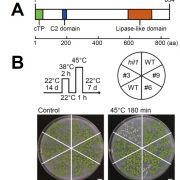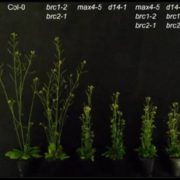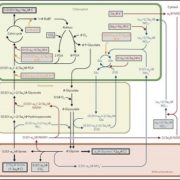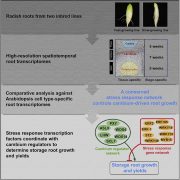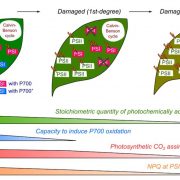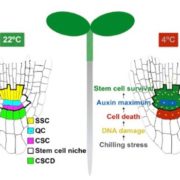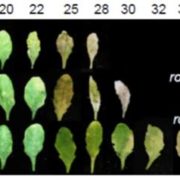Engineering Increased Stomatal Density in Rice
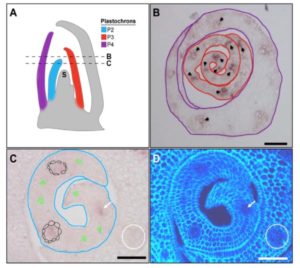 The coordinated differentiation of cell types during the metamorphosis of an organ is crucial for ensuring that the final form of the organ is appropriate for itsfunction. A case in point is the photosynthetic function of plant leaves that requires chloroplast-containing cells in the middle leaf layers to be interspersed with veins (to supply water and to redistribute metabolites) and overlaid with stomatal pores through which carbon dioxide can enter the leaf. In monocot leaves, stomatal cell files are positioned at the flanks of underlying longitudinal leaf veins, rather than directly above or below. Because stomatal cell files are specified in positions flanking procambial centers, it is conceivable that positional signals emanating from the developing vein inhibit stomatal specification in epidermal cells directly above and below the procambium. The SHORTROOT (SHR) pathway acts to radially pattern cells around veins in Arabidopsis. AtSHR is expressed specifically in the vasculature, but the protein, which is a member of the GRAS transcription factor family, moves outward to surrounding cell layers, where it interacts with a second GRAS family member, SCARECROW (SCR). SHR-SCR interactions specify cells as endodermis in the root or bundle sheath in the shoot. To test whether the SHR pathway has the potential to pattern epidermal cell types, Schuler et al. (10.1104/pp.17.01005) expanded the expression domain of the rice (Oryza sativa) OsSHR2 gene to include bundle sheath cells encircling the vein. In the transgenic lines thus created, supernumerary stomatal cell files were evident. These results suggest that the SHORTROOT pathway may coordinate the positioning of veins and stomata in monocot leaves. Interestingly, and contrary to theoretical predictions, the increase in stomatal density in these transgenic lines did not enhance photosynthetic capacity or increase mesophyll cell density
The coordinated differentiation of cell types during the metamorphosis of an organ is crucial for ensuring that the final form of the organ is appropriate for itsfunction. A case in point is the photosynthetic function of plant leaves that requires chloroplast-containing cells in the middle leaf layers to be interspersed with veins (to supply water and to redistribute metabolites) and overlaid with stomatal pores through which carbon dioxide can enter the leaf. In monocot leaves, stomatal cell files are positioned at the flanks of underlying longitudinal leaf veins, rather than directly above or below. Because stomatal cell files are specified in positions flanking procambial centers, it is conceivable that positional signals emanating from the developing vein inhibit stomatal specification in epidermal cells directly above and below the procambium. The SHORTROOT (SHR) pathway acts to radially pattern cells around veins in Arabidopsis. AtSHR is expressed specifically in the vasculature, but the protein, which is a member of the GRAS transcription factor family, moves outward to surrounding cell layers, where it interacts with a second GRAS family member, SCARECROW (SCR). SHR-SCR interactions specify cells as endodermis in the root or bundle sheath in the shoot. To test whether the SHR pathway has the potential to pattern epidermal cell types, Schuler et al. (10.1104/pp.17.01005) expanded the expression domain of the rice (Oryza sativa) OsSHR2 gene to include bundle sheath cells encircling the vein. In the transgenic lines thus created, supernumerary stomatal cell files were evident. These results suggest that the SHORTROOT pathway may coordinate the positioning of veins and stomata in monocot leaves. Interestingly, and contrary to theoretical predictions, the increase in stomatal density in these transgenic lines did not enhance photosynthetic capacity or increase mesophyll cell density


